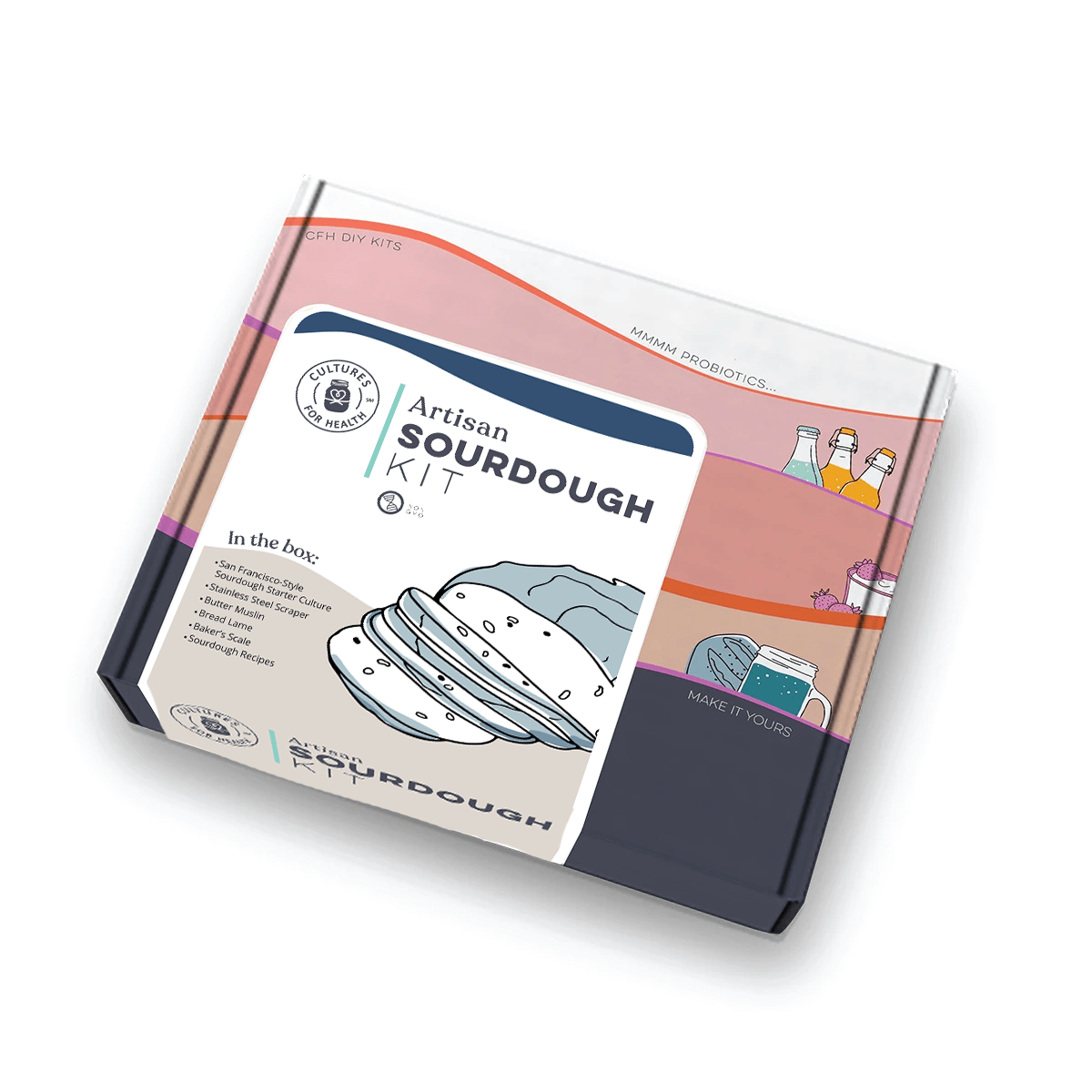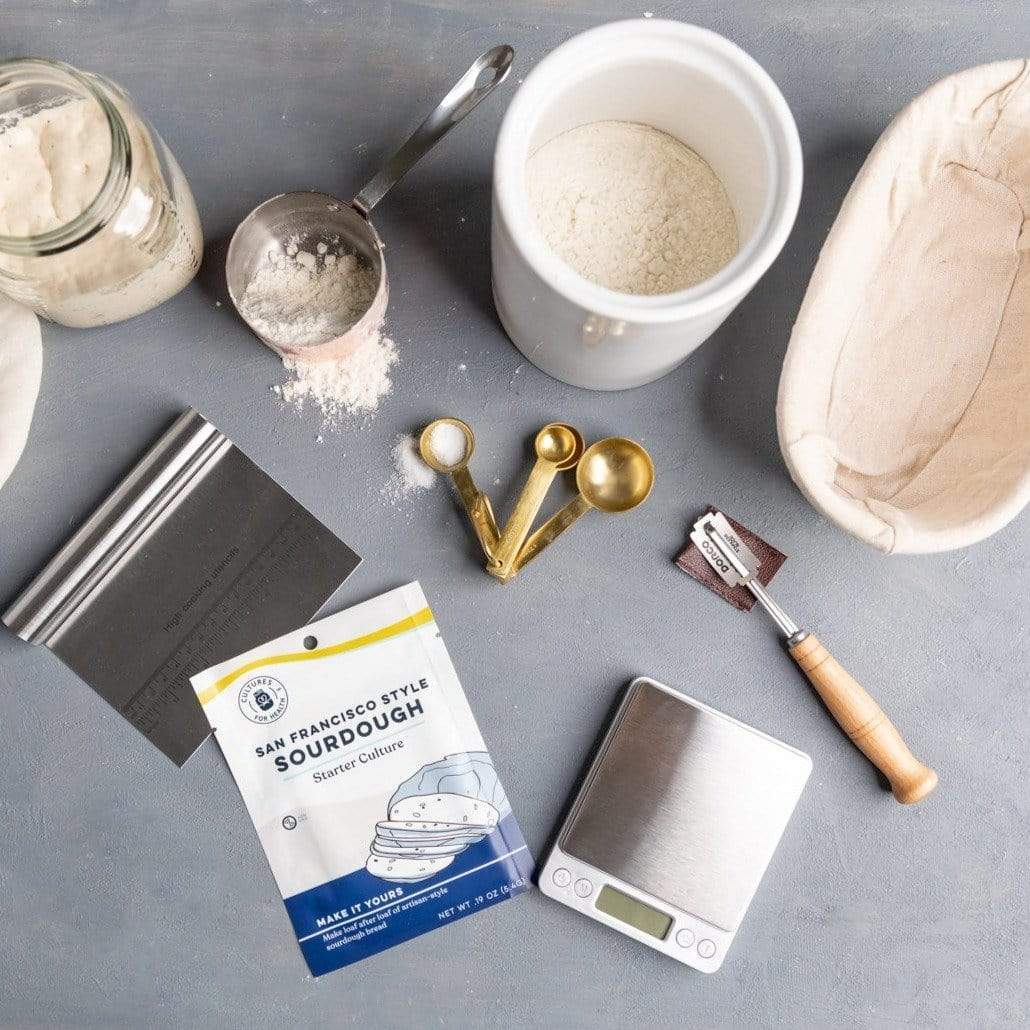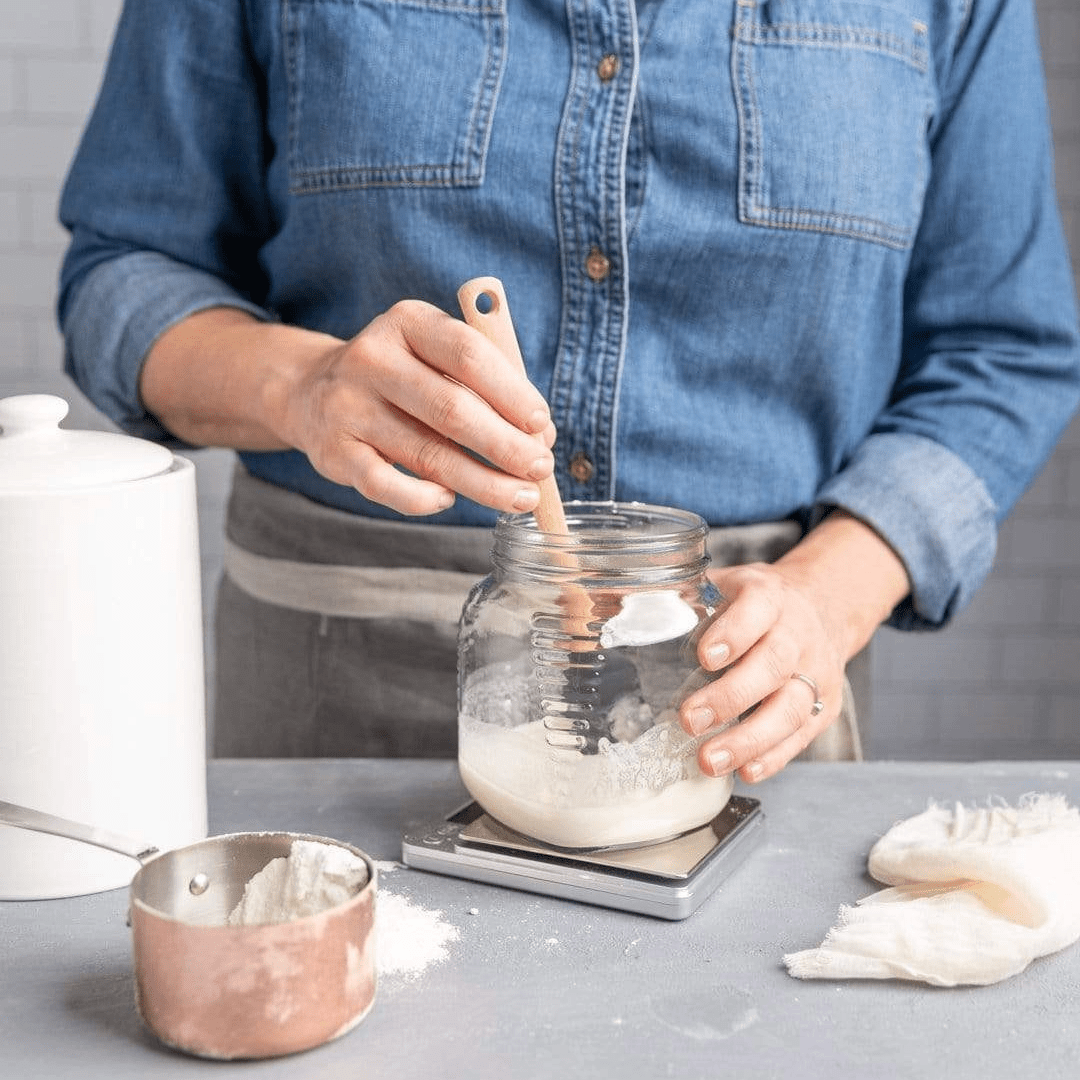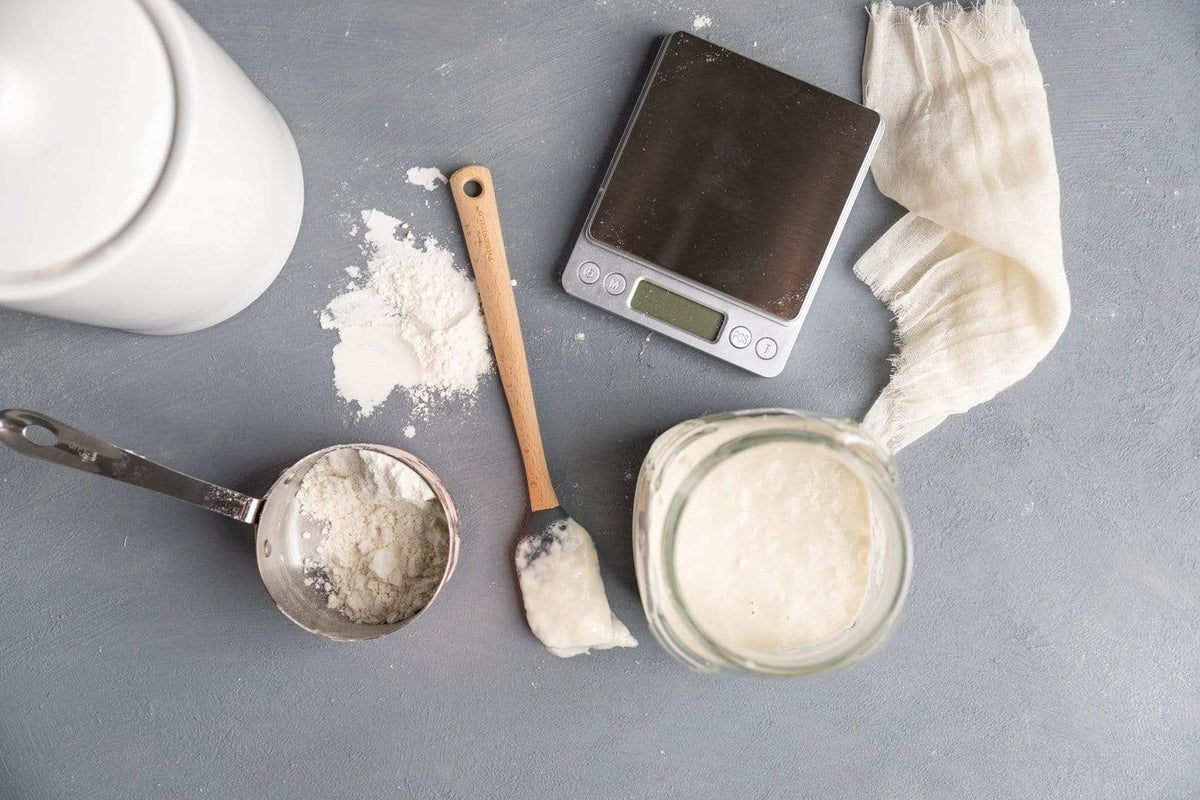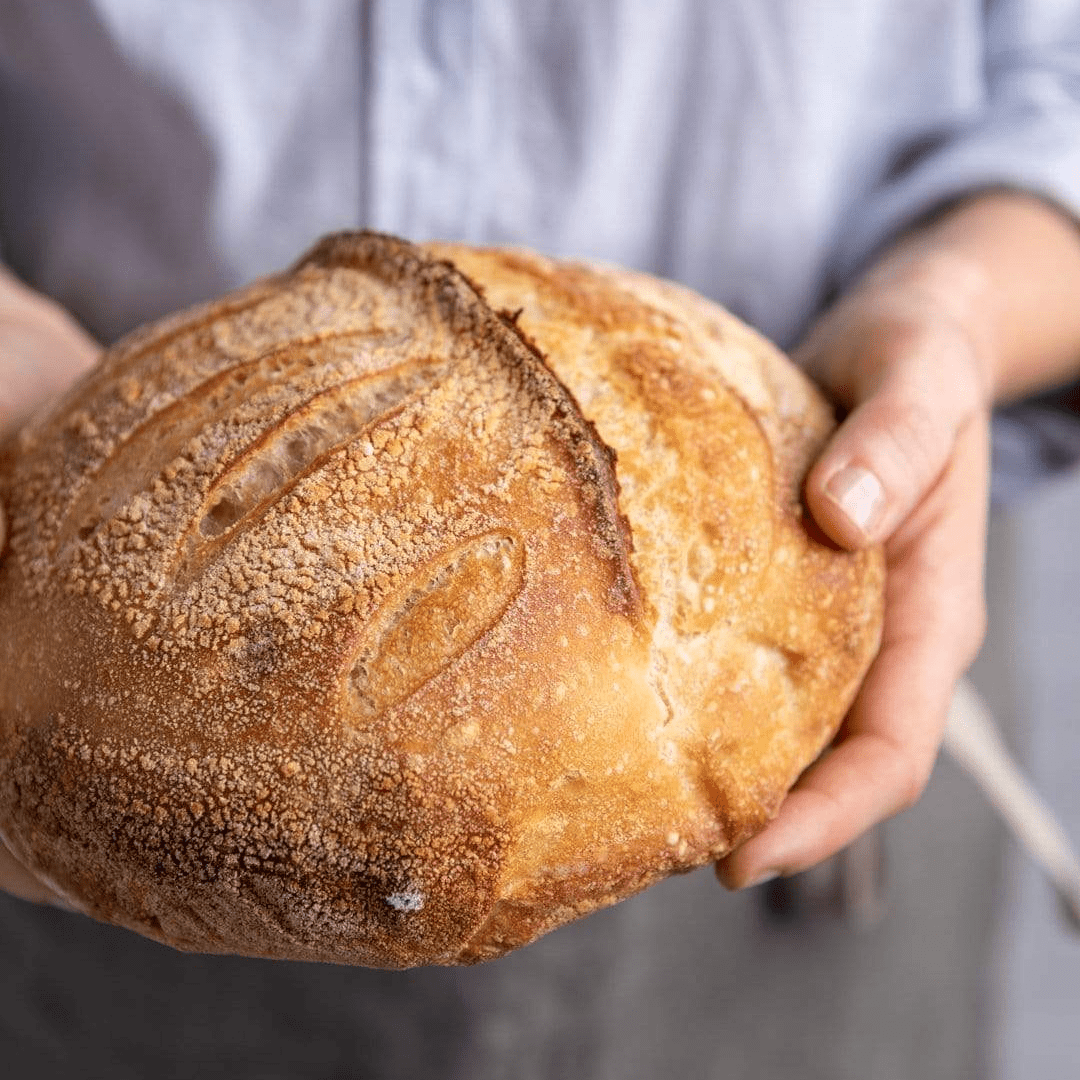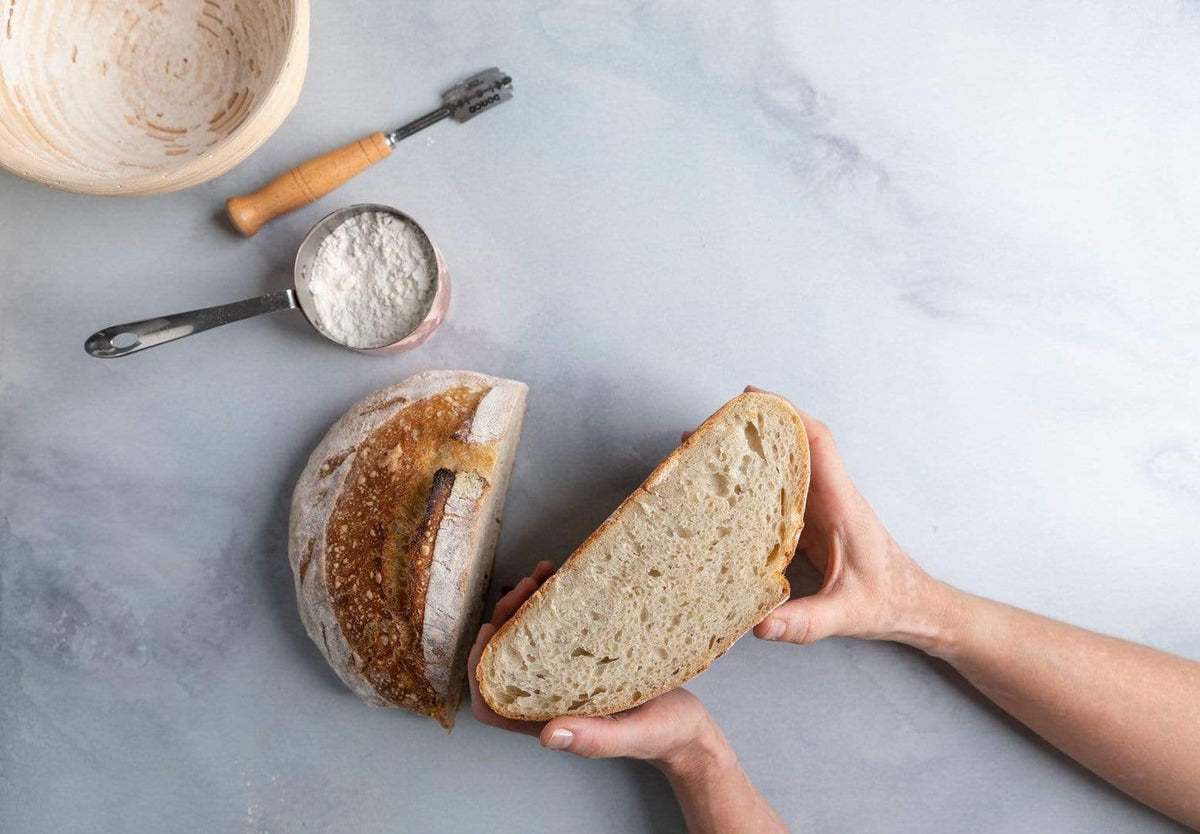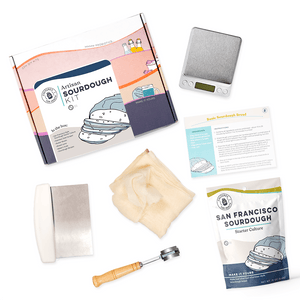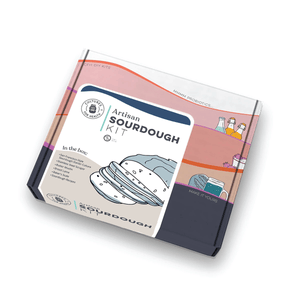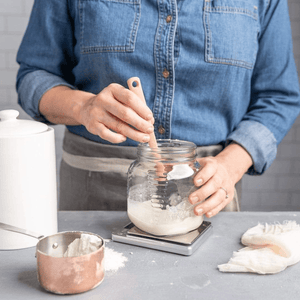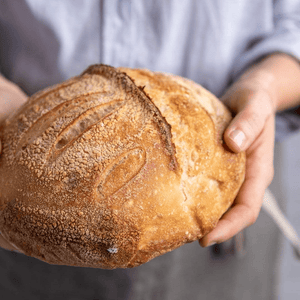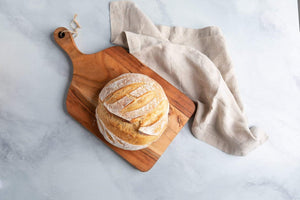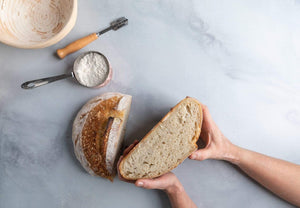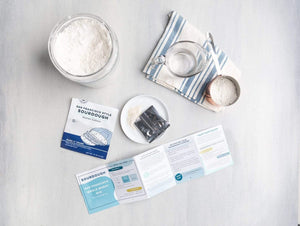
Over the last three decades, the price of white pan bread has risen from $0.84 to $1.53 per loaf in the United States. As a result, many people are now wondering if baking your own bread is cheaper than buying it.
Bread is a staple food, and it can be found in many different forms. Bread is usually made from flour, water, salt, yeast, oil, and sometimes milk or eggs. It can also contain other ingredients, such as fruits or nuts. The price of homemade bread varies wildly depending on the recipe and even your choice of flour brand, whether it's bread flour vs all-purpose flour. The selection of flour can greatly impact the texture, rise, and overall quality of your bread, making it essential to understand the distinctions and benefits of using either bread flour or all-purpose flour in your baking endeavors.
That's why we decided to research the costs of making bread at home versus buying it in a store, as well as the cost of ingredients when making different types of bread.
Is It Cheaper To Bake Your Own Bread?
Many factors go into deciding whether homemade bread is cheaper than store-bought bread, such as ingredient costs and electricity consumption during the baking time — and not just money, but also the value of your time spent baking versus buying at the store.
In a nutshell, if you're buying basic, cheap sandwich bread, it's probably cheaper than you can make it at home. But if you compare two loaves similar to what you could make at home — one made with high-quality ingredients as opposed to one made with lesser quality ingredients — home baking becomes much cheaper. Homemade bread uses more expensive ingredients and is more nutritious and better-tasting than store-bought loaves.
How Much Does It Cost To Make A Loaf Of Bread?

As we said earlier, the cost of making homemade bread varies, depending on the ingredients you use and how long it takes to create each loaf. This can be a bit confusing for someone just starting out, so it's important to first understand how much different ingredients cost. Once you know the total cost, you can easily choose your ingredients and do the math.
Cost of Ingredients For Making Bread at Home:

Flour:
Bread is made from flour, water, and yeast. Flour is usually the most significant part of this equation and can make up half or more of the total cost. The price of flour varies depending on the brand you buy and how much you need. Many types of flour are available, most of which work well for baking bread.
The main difference between different types of flours is their protein content. A pound of flour costs the following based on its type and brand:
- All-Purpose Flour: $0.53 - $1
- Bread Flour: $2.24 - $3
- Whole Wheat Flour: $1.12 - $2.72
- White Whole Wheat Flour: $2.4 - $4.5
Yeast:
Yeast also plays an important part in making your own bread because it helps with fermentation and proofing (the process during which the dough rises). All yeast types work well when baking bread. Of course, we’re big fans of sourdough, but let’s run some numbers with yeast. A pound of yeast costs the following based on its type and brand:
- Active Dry Yeast: $6.54 - $13
- Fresh Yeast: $6.88 - $7.92
Alternatively, sourdough cultures (a.k.a. sourdough starters) are a great way to create homemade bread without spending a lot of money. They’re easy to get started, but do require some regular feeding. Sourdough starters require a little more work and attention, but they're more sustainable and don't need to be replenished.
A sourdough starter is a starter of yeast fed regularly with flour and water. The yeast causes the dough to rise, and the bacteria creates gas bubbles, making the bread taste light and fluffy.
Once you buy sourdough starter, it is the cheapest way to leaven bread, and once you have a sourdough starter growing at home, it's almost free.
Yeast VS. Sourdough Starter: Price Comparison
To make a pound of bread, you typically need 1 tablespoon of yeast. A pound of yeast costs around $6.54, which is enough to make 30 one-pound loaves. That means yeast costs 20 cents per loaf.
You can get an entire sourdough bread kit for $49.99, and its contents are enough to provide perpetual yeast for as long as you care for it.
Artisan Sourdough Bread Kit
Let’s run numbers for your starter for the first year, and say you need five loaves per week — 260 loaves per year! This means that your starter costs 19 cents per loaf over the course of one year. However, as mentioned above, this is just an estimate of cost based on how much bread you'll make over one year with your sourdough starter. And that’s just for the first year. The more times you use your starter, the more you save; just by swapping out some of your bread ingredients to sourdough starters, you’ll start saving a ton of money.
In addition to being cost-effective, using a sourdough starter in place of yeast also creates a lighter-tasting bread and one that is more nutritious than its counterpart made with yeast alone.
Sourdough also creates a loaf that is easier to digest than yeast-based loaves because it contains less gluten, which makes it easier for your body to break down the nutrients into usable forms. You can buy a sourdough starter online. An ounce of sourdough starter costs:
- San Francisco Style Sourdough Starter: $11.99
- Whole Wheat Sourdough Starter: $11.99
- Rye Sourdough Starter: $11.99
- Gluten-Free Sourdough Starter: $11.99
I highly recommend buying the Sourdough Bread Kit if you've never baked sourdough bread before. With this kit, you can easily follow any sourdough bread recipe and create delicious artisan-style sourdough bread right at home!
In a nutshell, if you are making a lot of bread, the sourdough starter will be cheaper than yeast. But if you're baking once a week or less, and don't need to bake large amounts of bread, then the yeast will probably be cheaper, if not quite as delicious.
Oil:
Adding a touch of oil to the bread dough improves its crumb structure and prolongs bread shelf life. It also keeps the bread moist and tenderized by keeping water from evaporating during baking. A fluid ounce of oil contributes to the cost of baking a loaf of bread about the following based on its type and brand:
- Canola Oil: $0.08 - $0.79
- Extra Virgin Olive Oil: $0.09 - $0.41
Salt:
The salt is essential for kneading dough because it helps form gluten, allowing it to more easily hold carbon dioxide. And, of course, makes your loaf of bread taste fantastic! We only need a tablespoon of salt to make a loaf of bread which hardly costs a cent. If you opt to buy a pound for future use as well, it will cost you around $0.33.
Electricity/Gas:
Depending on the type of oven and where you live, electricity can make up a significant percentage of the cost of your bread. Assuming that you have a 3000-watt oven with a baking stone (a reasonable assumption), then in the US, you pay $0.12/kWh. Let's assume that your bread takes 2 hours to bake at 350°F (175°C; gas mark 4). This requires 6 kWh, so our running cost is $0.72/loaf.
Total Cost - A Side-By-Side Comparison:
A Loaf of White Sandwich Bread |
A Loaf of Whole Wheat Bread |
||
|
Ingredients: |
Price: |
Ingredients: |
Price: |
|
Flour: |
$0.53 |
Flour: |
$1.12 |
|
Yeast: |
$0.20 |
Yeast: |
$0.20 |
|
Oil: |
$0.18 |
Oil: |
$0.18 |
|
Salt+Sugar+Water |
$0.12 |
Salt+Sugar+Water |
$0.12 |
|
Electricity: |
$0.72 |
Electricity: |
$0.72 |
|
Total Cost: |
$1.75 |
Total Cost: |
$2.34 |
The Cost Of a Store-Bought Loaf Of Bread:

The price for each type of bread varies depending on its ingredients, quality, brand name, and how much labor is involved in making it. White sandwich bread is the most basic type of bread available at the grocery store and costs about $1-$2.86/loaf. Bread made with healthy and fermented ingredients like sourdough bread can go for around $2.44-$4.98/loaf.
Gluten-free varieties are more expensive than their regular counterparts because they require special ingredients. Gluten-free bread will probably run you at least $6 or $7, depending on ingredient quality and brand name.
How Much Money Can You Save By Making Your Own Bread?

The price of making your own basic white sandwich bread is about $1.75 per loaf, and the price of a store-bought loaf is between $1-$2.86/loaf. Putting all the effort and time into making white sandwich bread isn’t really worth it, if you’re strictly dealing with the bottom line.
However, when it comes to more premium bread with higher quality ingredients that actually tastes good, you can actually save quite a bit. It costs $1.50-$3 to prepare a loaf of healthy and fermented sourdough bread at home, which sells typically for around $4-$8. When you compare those amounts, it's clear that making your own bread is much cheaper than buying quality bread from any store.
Plus, bread prices are rising rapidly due to the highest inflation record in four decades, making homemade bread more expensive. So it's high time to stop thinking about whether homemade bread is cheaper or not and start learning how to make the best bread at home.
Is It Worth It To Make Your Own Bread?
The answer is yes — but only if you have time and space to bake a big batch at home. If you have a large family, it might be worthwhile to make your own bread, because it will save money and time. Homemade bread is also made with more nutritious ingredients and is healthier and better-tasting than store-bought loaves.
But buying store-bought bread may be more cost-effective than making it yourself if you just need one loaf of super basic, plain sandwich bread for breakfast or lunch.
Benefits of Making Your Own Bread at Home:
At first, making your own bread at home might seem like a daunting task. But once you know a few tricks and tips, making fresh bread in your own kitchen is surprisingly easy. Here are some of the benefits of making your own bread at home:
No Preservatives Or Additives:
Homemade bread is healthier than store-bought because you know what's going into it and because you know exactly where it came from — which eliminates preservatives and additives.
When you make your own bread, you won't be eating mystery ingredients like high fructose corn syrup or artificial coloring. You'll also know exactly what goes into the recipe — no more wondering if that "special ingredient" is really as good for you as it claims to be.
Control Over The Ingredients:
Making your own bread at home is an easy and rewarding way to get the best-tasting bread you can. You'll be in charge of what goes into it and how it's made, which means you can use fresh ingredients when possible.
There are wide varieties of flour, yeast, and liquid. By being able to choose exactly what you want from these options, you can ensure that whatever type of bread you make is right for you and your family's needs. The same goes for other ingredients such as salt and sugar — this way you can make sure that any recipe works with your personal tastes.
Versatility:
You can create any kind of bread you desire, including gluten-free, vegan, and low-carb options. You can also choose from various types of flour and yeast that suit your own dietary needs perfectly.
Economical:
Making your own bread doesn’t cost much, especially if you have access to basic kitchen tools like a large mixing bowl, rolling pin, and an oven-safe dish for proofing dough. It's even possible to make artisanal loaves using nothing but flour, water, and yeast.
Better For The Environment:
Home-baked bread isn’t packaged and shipped all over the country or world, which means less packaging and transportation waste and less CO.
Transport accounts for 27% of total greenhouse-gas emissions in the United States alone. The more you buy the bread from stores, the more it costs the environment.
The Takeaway: Is Homemade Bread Cheaper?
Savvy savers are always looking for ways to stretch their dollars and save money. If you're spending a considerable amount on store-bought bread, you'd be wise to consider baking your own at home. By doing this, you'll be saving money without sacrificing taste or quality ingredients.














